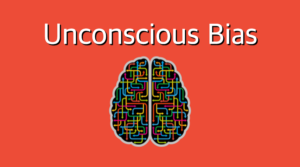Overcoming Unconscious Bias
Overcoming Unconscious Bias
 Unconscious bias is a popular topic right now given what is happening in our society. I’m even teaching a class on this next week. Unconscious bias is uniquely different from overt racism or discrimination, as it happens without our knowledge of it and comes from our subconscious programming since childhood. It is simply a tendency to make associations and have an inclination for or against a person or a group without awareness of it. It’s a result of our minds creating mental shortcuts based on past knowledge to make assumptions and decisions. According to Timothy Wilson, Professor of psychology at the University of Virginia, we are faced with about 11 million pieces of information at any given moment, and the brain can only process about 40 bits of information at a time. Therefore, shortcuts are necessary. The trouble is that sometimes our assumptions and associations are WRONG.
Unconscious bias is a popular topic right now given what is happening in our society. I’m even teaching a class on this next week. Unconscious bias is uniquely different from overt racism or discrimination, as it happens without our knowledge of it and comes from our subconscious programming since childhood. It is simply a tendency to make associations and have an inclination for or against a person or a group without awareness of it. It’s a result of our minds creating mental shortcuts based on past knowledge to make assumptions and decisions. According to Timothy Wilson, Professor of psychology at the University of Virginia, we are faced with about 11 million pieces of information at any given moment, and the brain can only process about 40 bits of information at a time. Therefore, shortcuts are necessary. The trouble is that sometimes our assumptions and associations are WRONG.
According to the article The Real Effects of Unconscious Bias in the Workplace posted by UNC Executive Development, “Biases can be based on skin color, gender, age, height, weight, introversion vs extroversion, marital and parental status, disability status, foreign accents, college attended, and more. If you can name it, there is probably an unconscious bias for it.” Although there are upwards of a hundred or more different biases that affect our decisions, I will only focus on three that are very prevalent. The first is the perception bias. This is the tendency to form stereotypes and assumptions about certain groups (based on any of the categories mentioned above) that make it impossible to be objective about members of those groups. This bias clouds our judgment and causes us to mistakenly put labels on people.
The second bias is the affinity or similarity bias which says that we have an unconscious tendency to favor people who are similar to us. This can be based on appearance, personality, background or even religious, political, professional, educational or other types of affiliation. Because we are much more comfortable around people who are similar to us and less comfortable around people who are different from us, we tend to surround ourselves with people who are most like us. In the workplace, this translates into hiring and giving opportunities to people who are like us, which is to the detriment of those who are different from us.
The last bias that I will focus on is the confirmation bias. This is the tendency to look for information that supports our beliefs and opinions and ignore information that goes against them. This bias further perpetuates the other two biases. Not only do we have beliefs about certain groups of people that are different from us and favor people who are like us, we then look for data that supports this and ignore data that goes against it.
The first step in overcoming these biases is to be aware that we have them. Everyone has unconscious biases. It doesn’t make us bad people. It makes us HUMAN. We can’t make these biases completely go away, but we can acknowledge that we have them, and then slow down our decision making and check our assumptions.
Here are some ways to do this:
- Make a conscious effort to look for data that not only supports your beliefs and opinions, but that also goes against them.
- Be open to different possibilities and ask yourself if you would handle the situation the same way if the other person was more or less like you.
- Expose yourself to people who are different from you in terms of appearance, affiliation, background, beliefs, etc.
- Seek to understand and find something to appreciate about these differences.
- Think about situations where you are most likely to be affected by unconscious bias and know your triggers. Do certain types of people or circumstances trigger you to be biased?
- Do one thing differently. Ask for someone’s perspective that you wouldn’t normally ask, watch a movie or read a book about people who are different from you, or frequent a small business whose owner is from another culture.
Although we have many differences as people, we all want the same things as a human race: life, liberty, the pursuit of happiness, and a better world for our children.
“We see the world, not as it is, but as we are – or, as we are conditioned to see it.” – Dr. Stephen R. Covey
“Coming together is a beginning. Keeping together is progress. Working together is success.” – Henry Ford
Coaching Readiness Assessment
Try our FREE Online Coaching Readiness Assessment to evaluate your readiness for leadership coaching.
LOCATION
Primary Location
3010 Highland Parkway, Suite 200
Downers Grove, IL 60515, US


